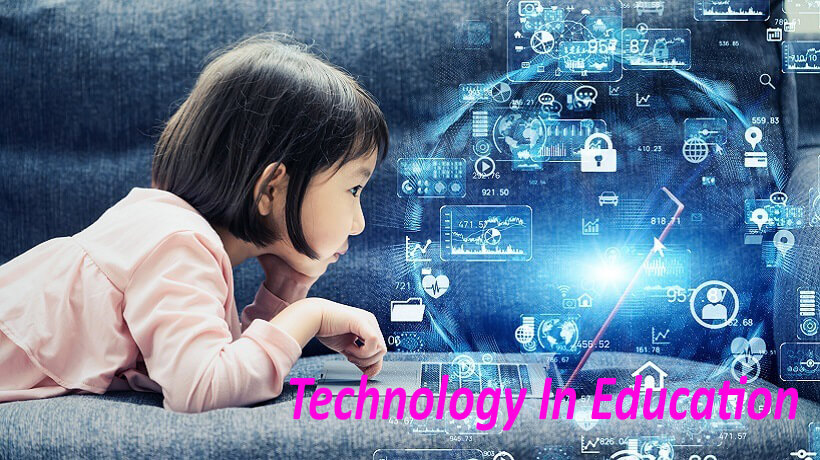In the 21st century, technology has become an integral part of our daily lives, reshaping how we communicate, work, and learn. In the realm of education, the importance of technology cannot be overstated. This article delves into the profound significance of technology in education, exploring the benefits, challenges, and the future of this dynamic relationship.
Section 1: The Evolution of Education
1.1 Traditional vs. Modern Education
- Historical perspective: From blackboards to digital classrooms.
- The shift from teacher-centered to student-centered learning.
- Customization and personalization of education.
1.2 The Information Age and Digital Natives
- How the digital age has transformed learning expectations.
- The emergence of digital natives: Tech-savvy students.
- The need for education to adapt to a tech-driven world.
Section 2: The Technological Landscape of Education
2.1 Online Learning Platforms
- The rise of Massive Open Online Courses (MOOCs).
- Access to education beyond geographical boundaries.
- Blended learning: Combining online and in-person instruction.
2.2 Interactive Learning Tools
- Educational software, apps, and gamification.
- Simulations and virtual labs for hands-on experiences.
- Adaptive learning systems: Tailoring education to individual needs.
2.3 Collaboration and Communication Tools
- Virtual classrooms and video conferencing.
- Instant messaging and discussion boards for student engagement.
- Connecting students and educators globally.
2.4 Learning Analytics and Data-driven Insights
- Collecting and analyzing student performance data.
- Personalized recommendations for improvement.
- Early identification of at-risk students.
Section 3: Benefits of Technology-Driven Education
3.1 Accessibility and Inclusivity
- Breaking down geographical and physical barriers.
- Catering to diverse learning styles and needs.
- Ensuring education for all, regardless of disabilities.
3.2 Enhanced Engagement and Motivation
- Gamification and interactive content.
- Real-world applications through simulations.
- Increased student participation and interest.
3.3 Customized Learning Paths
- Adaptation to individual student pace and abilities.
- Fostering independent learning and critical thinking.
- Addressing gaps in knowledge through targeted resources.
3.4 Global Connectivity and Collaboration
- Exposing students to diverse perspectives and cultures.
- Collaborative projects with peers worldwide.
- Preparing students for a globalized job market.
Section 4: Challenges and Considerations
4.1 The Digital Divide
- Ensuring equal access to technology and the internet.
- Bridging socioeconomic and geographical disparities.
- Strategies for equitable technology adoption.
4.2 Data Privacy and Security
- Protecting sensitive student data.
- Complying with data protection regulations.
- Balancing data collection with privacy concerns.
4.3 Teacher Training and Tech Literacy
- Preparing educators to effectively use technology.
- The importance of ongoing professional development.
- Overcoming resistance to technological change.
4.4 Maintaining Human Connection
- The role of educators in fostering relationships.
- Combating feelings of isolation in online learning.
- Striking a balance between technology and human interaction.
5.1 Artificial Intelligence in Education
- AI-powered tutors and personalized learning.
- Automated grading and assessment.
- Predictive analytics for student success.
5.2 Immersive Technologies
- Virtual and augmented reality in education.
- Enhanced experiential learning through VR.
- VR classrooms for remote and immersive learning.
5.3 Blockchain for Credentials and Verification
- Secure and tamper-proof academic records.
- Streamlining the hiring process for employers.
- Certifying lifelong learning achievements.
5.4 Quantum Computing and Advanced Research
- Accelerating scientific discovery and problem-solving.
- Complex simulations for scientific education.
- Preparing students for the future of technology.
5.5 The Role of 5G and Edge Computing
- High-speed, low-latency connectivity for remote learning.
- Enabling IoT devices for smart education.
- Expanding opportunities for real-time collaboration.
In conclusion, technology has revolutionized education, offering unprecedented opportunities for students and educators alike. The integration of technology has not only made education more accessible and engaging but also aligned it with the demands of the modern world. However, to fully harness the benefits of technology in education, it’s crucial to address the challenges of access, privacy, teacher training, and maintaining a human touch in digital learning environments.
As we look ahead, the fusion of education and technology will continue to evolve, shaping the future of learning. By staying informed about emerging trends and embracing technological innovations, educational institutions can prepare students to thrive in an ever-changing, technology-driven society. Ultimately, the importance of technology in education lies in its power to transform lives, expand horizons, and pave the way for a brighter future.
